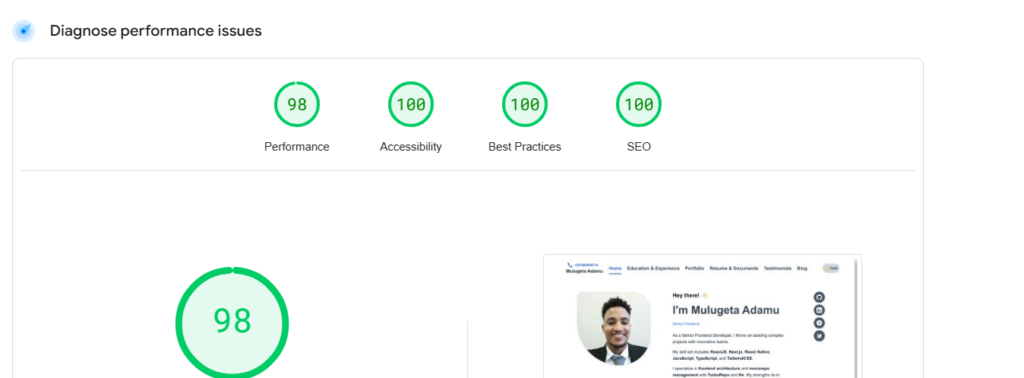Google ranking for your website is dependent on serveral factors like Expertise, one of the most important ranking factors is Page Speed.

The page speed is dependent on serveral different factors.
– Largest Contentiful Paint
– FIrst Input Delay
– Cumulative Layout Shift (CLS)
Largest Contentiful Paint measure the amount of time it takes for your website to load images, LCP affects user experience because it reflects how quickly main content of a page becomes available.
The LCP ranks according to different categories:
Good: Less than 2.5 seconds.
Needs Improvement: Between 2.5 and 4 seconds.
Poor: More than 4 seconds.
The Largest Contentiful Paint can be reduced in serveral ways, for example by compressing images, converting to modern image formats, using responsive images based on screen size.
Pictures can also be set to lazy loading, which means the pictures are loaded as they come in. Also font-size could be reduced by including the only ones used on the page.
The problem where WordPress comes in.
Many WordPress themes, especially multipurpose ones, are built to cater to a wide variety of industries and user needs. While this flexibility is beneficial, it often leads to unnecessary bloat.
Unused Features: The theme loads unnecessary scripts and styles for features that are not active (e.g., e-commerce scripts on a blog site).
Excessive Code: Themes often include features like sliders, animations, page builders, and widgets that are not always used on every page. However, the associated CSS, JavaScript, and other files are still loaded, increasing page size and load times.
Excessive Inline CSS and JS: Page builders often generate large amounts of inline CSS and JavaScript for layout styling, leading to bloated HTML files.
Multiple Resource Requests: Page builders typically break layouts into smaller components, each requiring its own styles and scripts, resulting in numerous HTTP requests.
Excessive Third-Party Resources: Themes frequently load external resources like Google Fonts, Font Awesome, or jQuery libraries, which increase the number of HTTP requests.
Why new development patterns next.js patterns help?
Static Site Generation (SSG):
- Pages are pre-rendered at build time and served as static HTML, reducing server load and improving load times.
Incremental Static Regeneration (ISR):
- Allows static pages to be updated in the background without requiring a full rebuild.
Server-Side Rendering (SSR):
- Pages are rendered on the server for every request, ensuring fresh content is delivered to users.
Pre-rendering:
- Both SSG and SSR ensure that pages are fully rendered HTML when sent to the browser, making them easily indexable by search engines.
Automatic Code Splitting:
- Only the code needed for the current page is loaded, reducing page size and improving load times.
Font Optimization:
- Fonts are automatically optimized with preloading and font-display strategies.
Image Optimization:
- The
next/imagecomponent lazy-loads images and serves optimized formats (e.g., WebP), improving LCP and overall performance.

Leave a Reply